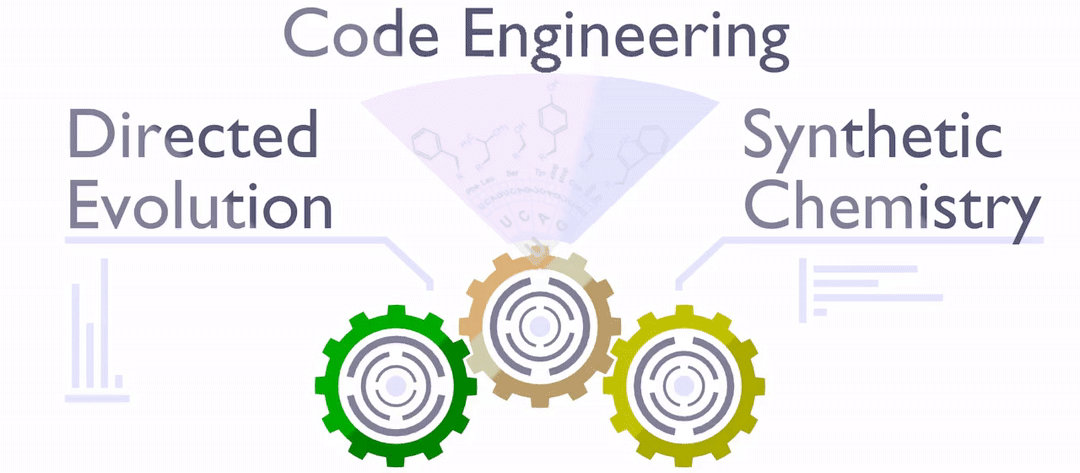Explore Science in Action with Our Lab!
Watch our visually engaging, easy-to-follow videos showcasing groundbreaking science, some methods and innovative projects, featured in the JoVE (Journal of Visualized Experiments).
- Engineering 'Golden' Fluorescence: Non-Canonical Amino Acids & Protein Analysis l Protocol Preview
- Antimicrobial Peptides Produced: Non-Canonical Amino Acids l Protocol Preview
Methods and Techniques
-
Adaptive Laboratory Evolution (ALE):
- Evolutionary strategies to adapt cells for non-standard biochemical functions.
- Integration of ALE with genome editing and metabolic engineering.
-
Directed Evolution:
- Classical and machine learning-assisted approaches for enzyme and cell evolution.
- Libraries for gene editing targeting synthetic metabolism and biocatalysis.
-
Orthogonal Enzymes and Translation Systems:
- Creation of specialized enzymes for bioorthogonal chemistry and biocatalysis.
- Novel translation machinery supporting non-standard biochemical processes.
-
Genome Editing & Gene Integration:
- Advanced techniques for precise genetic modifications.
- Functional integration of synthetic genes into natural systems.

Cross-Disciplinary Integration
-
Biophysics and Biophysical Chemistry:
- Detailed studies of protein structure, function, and dynamics under varying conditions.
- Exploration of novel biochemical interactions enabled by ncAAs.
-
Classical Organic and Peptide Synthesis:
- Leveraging traditional synthetic chemistry techniques to integrate ncAAs into biological systems.
-
Social, Cultural, and Ethical Dimensions:
- Addressing societal implications of xenobiology and synthetic biology.
- Promoting awareness and education regarding the transformative potential of these fields.



